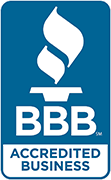If you are an employee, you get a paycheck every pay period and most likely pay little attention to your taxes until the end of the year. Your employer does a lot of the work for you and you get a W2 at the end of the year. However, if you are a freelancer or are self-employed, the responsibility of paying your taxes rests solely upon your shoulders.
There are 14+ million American taxpayers currently in the IRS collection division, and it’s easier to land there if you’re self-employed and don’t fully know what to do when it comes to taxes. Below are some simple tips to help you 1) reduce your tax liability and 2) keep you out of tax trouble.
Make sure to check with your tax professional to discuss your unique situation. If you’re already tax trouble, you’re not alone but you must take action before the IRS levies your bank account or seizes any property you have. Contact us for a free, no-obligation consultation and let our tax resolution team get you out of tax trouble. http://ramonortegacpa.com/contact/.
With that said, let’s jump into the tax tips for freelancers and the self-employed.
- Report business-related expenses and keep clean records. If you purchased a new laptop to help you with your business, you can report that as a tax deduction. If you’re using your cellphone primarily for communicating with business clients, you can claim that as a tax deduction as well. If you are able to prove with documents that your write-offs are legitimate, you can include them on your tax return. Make sure to keep strict and detailed records of any deductions in case the IRS wants proof later on.
- Differentiate between your business and personal expenses. The IRS considers most business-related expenses as legitimate write-offs but if you go beyond a certain limit, you can be subjected to an audit. For example, you can include office furniture or office supplies in your tax deductions for your home office, but you definitely may not claim that new sofa set in your second living room as a deduction.
- Make Estimated Tax Payments. As an employee, you get taxes taken from your paycheck every time. If you’re self employed, you don’t. This can lead to a large tax bill at the end of the year that you’re unable to pay. Self-employed taxpayers generally need to make quarterly estimated tax payments. IRS Publication 505, Tax Withholding and Estimated Tax, has details on making those payments.
- Time large purchases toward year’s end. If you have been planning to get a new printer or a new ergonomic chair for your home office, do so in the last quarter. This way, you can include the purchase as a tax deduction for the year. The bigger the purchase, the bigger the tax deduction.
- Monitor and track your use of your car, phone, and other utilities.
- It is often highly impractical to get a separate car, Internet subscription, electricity, or even a phone for your home-based business. What you should do instead is to keep track of how much you use these items for business-related purposes. How many minutes are spent on business calls? How much mileage do you drive for business trips? Keep a list of these usages and include them in your list of tax deductions.
- Have a qualified tax professional on your side. There are a lot of variables when it comes to taxes. As a small business owner, having someone to turn to when you have questions is absolutely essential. You should focus on growing your business and doing what you love.
If you’re already in tax trouble and you need an expert tax resolution provider who knows how to navigate the IRS maze, reach out to our firm and we’ll schedule a no-obligation confidential consultation to explain your options to permanently resolve your tax problem. http://ramonortegacpa.com/contact/.




